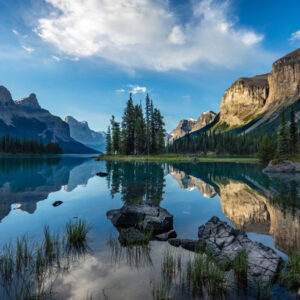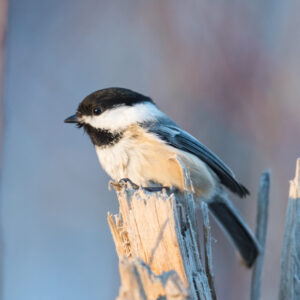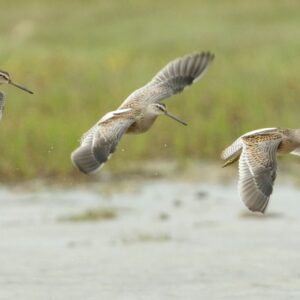Protecting shorebirds with Cree Partners
Since 2012, Nature Canada has worked in partnership with the Cree Nation Government, the Cree Nation of Waskaganish, the Cree Trappers Association and the Eeyou Marine Region Wildlife Board, in the James Bay region to protect shorebirds.
This year, we have also begun working with the Cree Nation of Wemindji. Through the financial support of Environment Canada’s Habitat Stewardship Program (HSP) and the Aboriginal Fund for Species at Risk (AFSAR), we have succeeded in proving the importance of Eastern James Bay for many shorebirds and species at risk.
A notable bird of focus has been the Rufa Red Knot. During fieldwork between 2013 and 2017 along the southeastern side of James Bay, including the islands within the homelands of the Cree Nation of Waskaganish, we observed hundreds of Knots and discovered several important habitats that they occupy. All of these areas are part of a new Important Bird and Biodiversity Area (IBA).
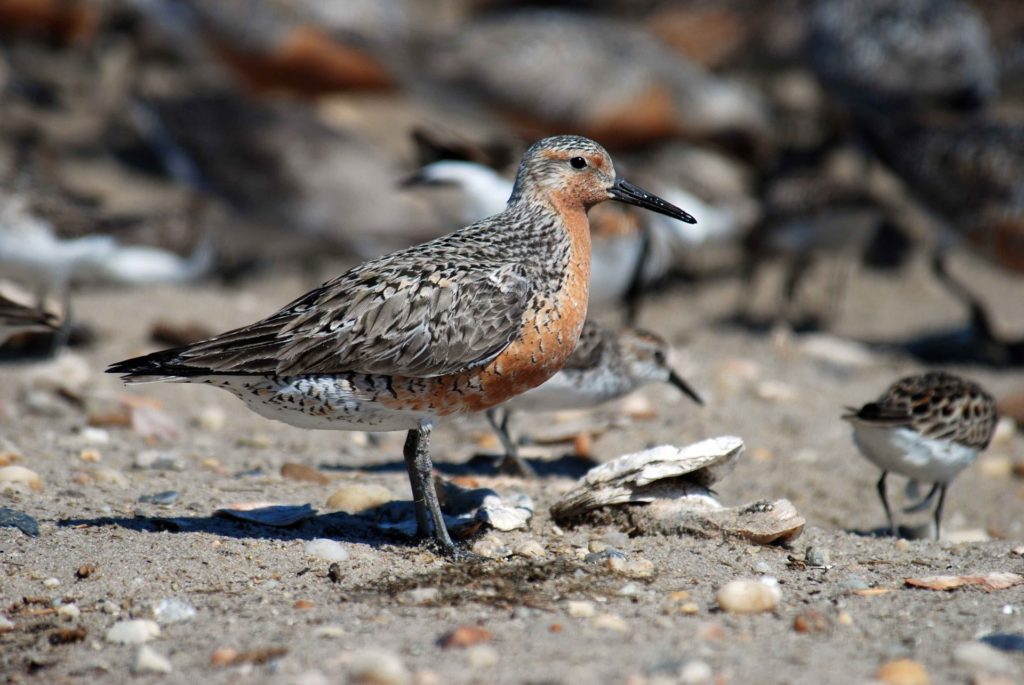
Rufa Red Knot
We also found good numbers of other species including the federally threatened Hudsonian Godwit, with overall shorebird numbers being in the tens of thousands.
The North American Bird Conservation Initiative (NABCI) in Canada, which Nature Canada is a part of, recently released the second State of Canada’s Birds report, and in this report, we showed how the populations of Canadian bird groups have changed since 1970. Sadly, the report stated that all shorebird species have shown a population drop of 40 percent that is largely due to coastal development and human disturbance.
Harnessing Traditional Knowledge
Indigenous peoples have a vast history of cultivating a strong connection to nature that has resulted in a deep understanding of how best to conserve and protect their territories. The Cree peoples’ careful stewardship of their lands over millennia has resulted in some of the richest wildlife areas in Canada.
Rufa Red Knots and Hudsonian Godwits are among the superheroes of the bird world. They complete a 30,000 kilometer migration every year, relying on key stopover sites like the James Bay Basin to rest and fatten up before continuing their journey. Due to the species’ reoccurring presence in their homelands, First Nations like the Moose Cree are helping to save the birds alongside their partners.
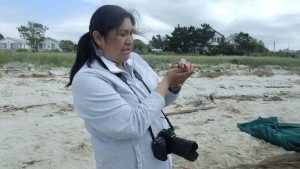
Lillian Trapper of the Moose Cree First Nation, holding a Rufa Red Knot at Delaware Bay in 2011
Since 2009, Nature Canada has worked with the Moose Cree First Nation towards shorebird stewardship conservation along their coastal homelands. This has lead to the consolidation of several small IBAs along their coast into a giant IBA, Pei lay sheesh kow, which captures the entire coastal homelands of the Moose Cree.
In the past few years, several Moose Cree have participated in spring and summer shorebird camps on their homelands, organized by the Canadian Wildlife Service. Moose Cree have also participated three times in the famous Delaware Bay shorebird study in coastal New Jersey. All this involvement is building local interest and awareness within their Nation at this extremely important site for the Red Knot, the Hudsonian Godwit and other shorebird species. The Moose Cree’s determination to protect this and other areas in their homelands sets a great example for all of us to follow.
“We have a lot of animals that come into our area, birds flying through. And it’s not recognized that they are at risk, they’re really important here!”
– Lillian Trapper of the Moose Cree First Nation, presenter during the WHSRN’s 25th-anniversary ceremony in 2011
Protected areas are important for the effective conservation of our endangered and threatened shorebirds. One must only look to the Cree and their territories for proof that conservation works when people diligently work together. If everyone could imitate even half of the Cree’s land stewardship habits, our shorebirds, including the Red Knot, will thrive once more.
When we work together, conservation works.
How You Can Help:
Sign the Petition: Nature Canada is working to create more protected areas in Canada to save our birds, aquatic animals and other endangered wildlife. Sign our petition to create real change and have your voice heard by our government when it matters most.
Do Not Disturb: Let birds like the Rufa Red Knot and Hudsonian Godwit rest and refuel during their long migration by keeping your dogs on leashes and minimizing other disturbances when you see them and other shorebirds.
Keep Cats Safe and Save Bird Lives: Explore safe outdoor options for your cat at catsandbirds.ca
Keep Our Beaches Clean: Buy food in bulk and bring glass jars, use reusable cups for your morning (bird-friendly) coffee and avoid single-use plastics wherever possible. Join local beach and shore clean-ups whenever you can.
View the NABCI in Canada Report Here: www.stateofcanadasbirds.org
Le Rapport est Disponible en Français Ici: www.etatdesoiseauxcanada.org

